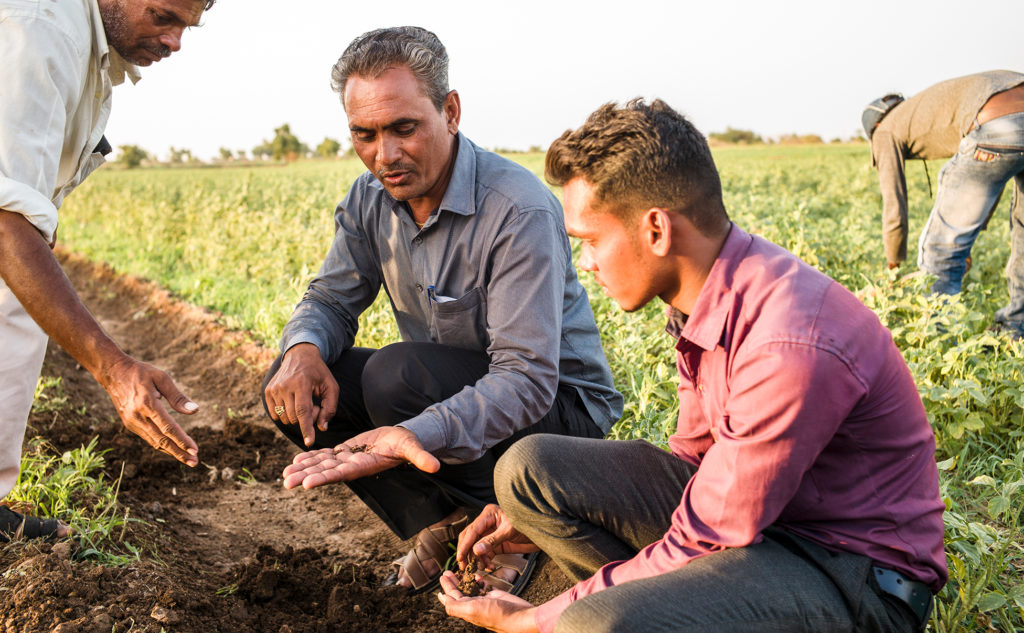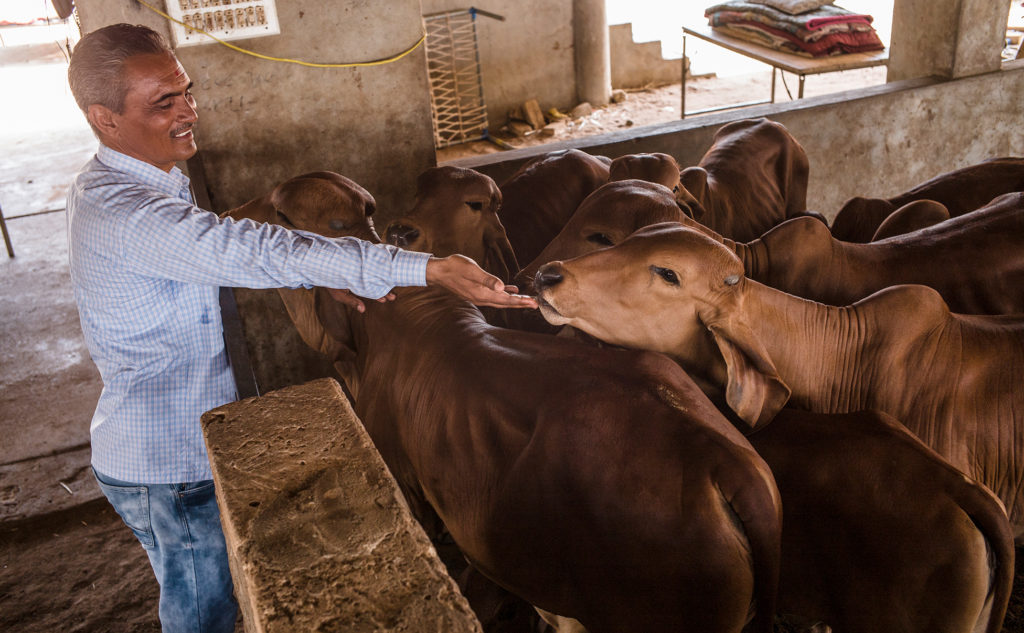Back to nature: reaping the rewards of natural cotton farming in India
About 45 per cent of the synthetic pesticides applied to crops in India are used in cotton farming, and these have degraded the soil, making it increasingly difficult to grow healthy plants. But Gujarat-based farmer Vinodbhai Patel has abandoned the use of chemical insect repellents and fertilisers in favour of sustainable farming methods, using substances sourced from nature to boost his yield and replenish the earth.
What do you get if you mix a generous dose of sacred cow dung and urine with some unrefined cane sugar (jaggery), a handful of soil, some Bengal gram chickpea flour and water, then leave it to ferment for a few days? A very effective natural fertiliser that performs just as well as any chemical alternative. The difference is, it does no harm – only good.
Known as jeevamrut or the elixir of life, this natural liquid fertiliser works wonders in the cultivation of cotton plants, as Vinodbhai Patel has discovered. This 49-year-old Indian farmer has increased his yield through such natural farming practices while eliminating his dependence on costly synthetic pesticides and fertilisers. The results? Healthier, enriched soil, fewer pests, 100 per cent growth in production, and a 200 per cent increase in profits.
Using ingredients from nature
Jeevamrut is highly effective in boosting soil fertility; Bengal gram is a rich source of protein which aids the multiplication of microbes as it ferments, restocking soil with useful organisms and bacteria that have been lost.
Patel and his workers also make pesticide from the leaves of local neem trees, crown flower and Datura shrubs. And they have planted Tecoma trees around the farm; when in flower, these attract aphids away from the cotton plants.
“I believe nature can help me address insect problems,” he says. “Through BCI (the Better Cotton Initiative, which he joined in 2016), I’ve learnt about protecting the natural predators (such as ladybirds) of cotton-eating insects, as well as natural pesticides.”
“My wife was supportive of my ambitions. But my brother, who is also a cotton farmer, was sceptical, and tried to persuade me against it. Even my parents were apprehensive, concerned by the uncertainty and potential yield loss.”
Committed to sustainable farming
Many smallholders in the arid Saurashtra region of Gujarat, where Vinodbhai runs his farm, live in poverty. They rely on government subsidies for chemical fertilisers, and on credit from local shopkeepers to buy agrochemical products. The predominant use of synthetic pesticides in India (about 45 per cent of which are used in cotton farming) has degraded the soil, making it hard to grow healthy plants.
It was a challenging period in Vinodbhai’s life that prompted him to re-evaluate his chemicals-based cotton growing practices four years ago. He was deeply troubled by the poor soil conditions in his village of Haripar: “The soil on my farm was so degraded, I could hardly find any earthworms in it,” he says.
He finally decided to do something about it, adopting sustainable agricultural practices instead – much to the disappointment and alarm of his family.
“My wife was supportive of my ambitions. But my brother, who is also a cotton farmer, was sceptical, and tried to persuade me against it. Even my parents were apprehensive, concerned by the uncertainty and potential yield loss.”
Equally unimpressed with the decision, many of his seasonal workers threatened to leave if he were to adopt such “eccentric”, labour-intensive agricultural practices. Some walked away, convinced that the experiment would lead to crop failure and the loss of their sole income.
Despite the scepticism of those around him, Vinodbhai remained undeterred. To compensate for any potential yield loss, he simply planted 45 per cent more plants.
He was not even put off by the effort involved in preparing jeevamrut (which has to be made frequently, having a shorter shelf life than synthetic alternatives). He even built two 2,500-litre tanks with rotating stirrers to mix the ingredients, and a sprayer fitted with a pump for applying the liquid directly to the cotton-plant leaves, sparing his workers the back-breaking work of carrying it around.
The workers understand that natural fertilisers and pesticides are less harmful to their health than conventional agrochemicals.
Support in the field
Action for Food Production (AFPRO), one of BCI’s field-level partners, has helped Vinodbhai to fulfil his ambition to nourish the soil and manage pests using ingredients found in nature. AFPRO has also taught him about the benefits of crop rotation and soil testing.
“Now, I see many more earthworms, which suggests my soil is recovering. My soil tests show that nutrient levels have increased.”
Spreading the word
By eliminating the use of synthetic pesticides and fertilisers on his six-hectare farm (where he also grows groundnut, cumin, anise seeds, chickpeas and wheat) in favour of exclusively biological alternatives, Vinodbhai has now become a licensed BCI Farmer.
Now a BCI Lead Farmer, he is sharing his knowledge of natural farming, training 30 other BCI farmers in his community and advising on best practice. Since 2016 he has invited more than 3,000 farmers to visit his farm and gain inspiration. He has also shared photos and videos with more than 1,500 farmers via WhatsApp.
While only around 10 per cent of the BCI Farmers in his region have adopted natural methods so far, he is making headway. “For most farmers, seeing is believing,” he says. “They’re not easily persuadable – they like to see proof that alternative practices work. But the more they see and know, the more likely they’ll be to change their ways.”








